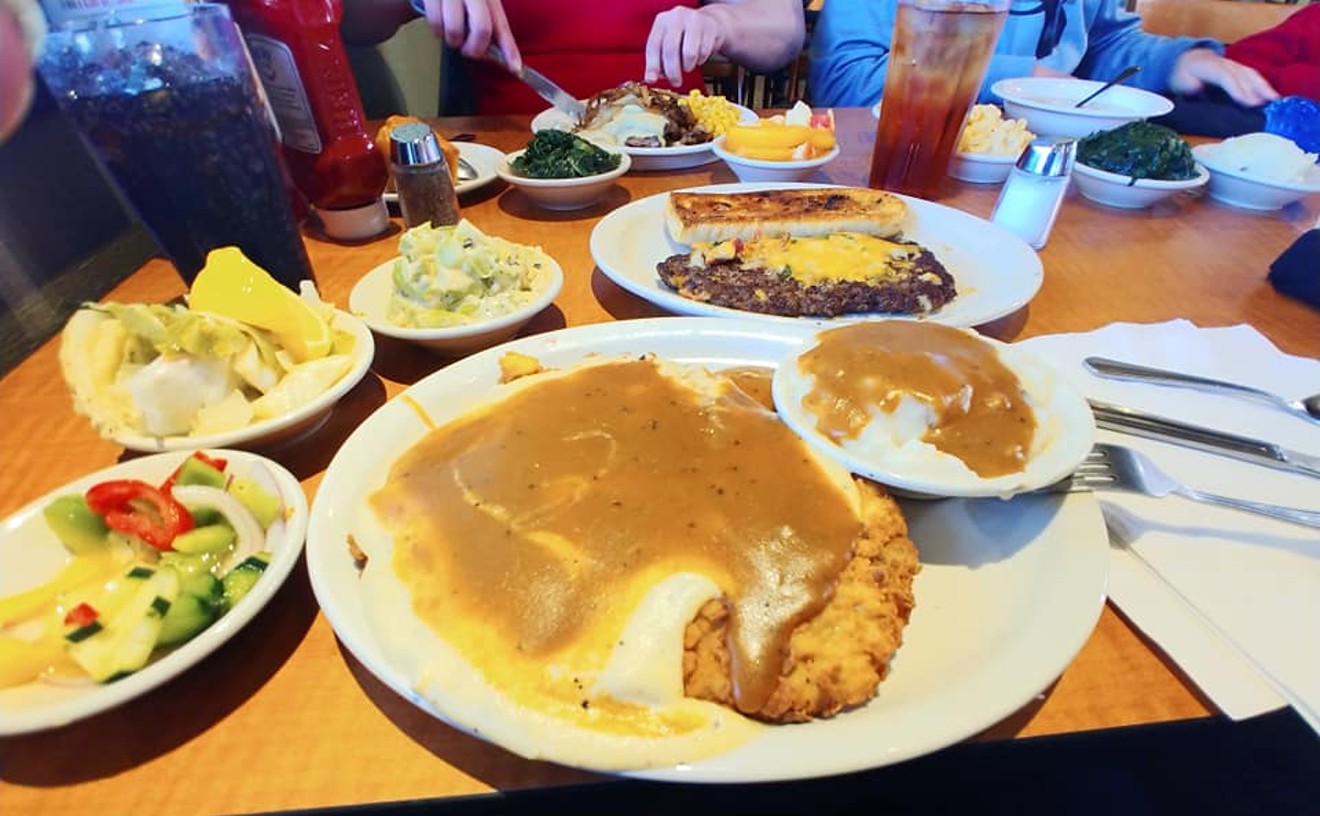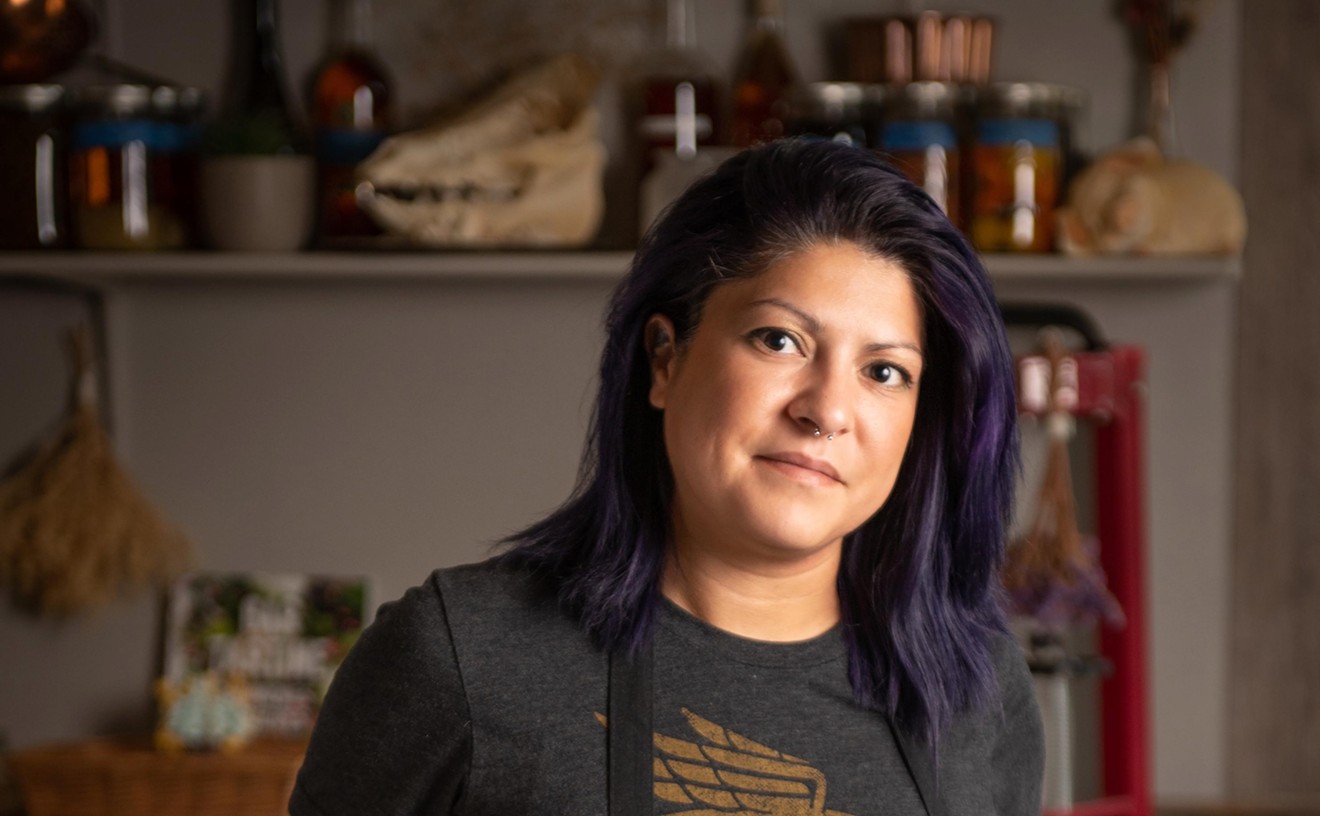This was supposed to be a traditional review of a trendy new Uptown restaurant. I planned to visit Hot Joy a few times, eat some food and write about whether it was delicious. It’s not delicious, but Hot Joy faces a bigger issue: race.
Hot Joy is a clueless white-dude fantasy in which Asian identity and cuisine are reduced to a string of ironic clichés. Its menu jumbles together pad Thai, ramen, spring rolls and every other East Asian food that’s middlebrow-approved. Its foods, billed as spicy and funky, are instead sweetened and tame. The attitude is one of manufactured edginess, long a favorite refuge of the shallow and ill prepared.
The problem isn’t necessarily that Hot Joy’s founder, owners, investors, executive chef and interior designer are all white. White chefs such as Andy Ricker and Tyson Cole have found ways to cook Asian food with respect and creativity. But all those factors, combined with a fetishistic interior, suggest that Hot Joy sees Asian-ness as a big goof, a fad, like the Sriracha bottles that grace its tables. And if Hot Joy’s attitude shows a shallow respect for Asia, its haphazard cooking betrays the kind of overconfidence that grows from ignorance.
The interior is festooned with Asian kitsch: paper dragons, dragon masks, tiki masks, lanterns, stone Buddhas and vaguely Chinese paintings. Ownership says a wall mural is inspired by “Japanese mythology.” The women’s bathroom sign is a dewy-eyed anime girl.
Above the bar and in private booths, the light fixtures are leering, garishly colored Chinese masks. Some of them are fitted with dark red bulbs to produce villainous red eyes; one wears a conical coolie hat added by Hot Joy staff. (Online photos indicate the San Antonio location also has a mask topped with a conical hat.)
Now, these masks may look blatantly offensive, but they’re only subtly so. They come from Chinese culture and are worn at New Year parades and other celebrations. Unfortunately, in this atmosphere, topped with another culture’s hats and finished with demonic red eyes, a genuine Chinese artifact looks like something from a bigoted grandpa’s yard sale.
“Those disembodied heads have got to go,” says Sarah Bronson, a Filipino-American food writer based in Houston. “I can’t imagine looking an Asian customer in the face with those around. But of course this place isn’t for Asian people.”
In this atmosphere, topped with another culture’s hats and finished with demonic red eyes, a genuine Chinese artifact looks like something from a bigoted grandpa’s yard sale.
tweet this
In fairness to Hot Joy, when an Asian-American Yelper named Helen H. noted that the takeout containers, with chopsticks jauntily sticking out the top, were “unlucky superstitious” and associated with death in Chinese culture, a representative replied, “Yikes! I am so sorry you found the decor offensive. That was certainly not our goal.” The restaurant ceased the offending practice.
Then again, why did it take a Yelper for Hot Joy to realize that it was committing a well-known and documented cultural taboo? Yikes, indeed.
There are deeper issues than red-eyed masks or superstitious omens. Andrew Ti, creator of the website and podcast Yo, Is This Racist?, explains: “All of these Asian things are used out of context and truly objectified, in the service of reinforcing the idea that Asian-ness is foreign and ‘other.’”
Ti, an Asian-American, calls Hot Joy’s interior “super racist,” adding that owner Chad Carey “is a white dude celebrating his ignorance in the name of appreciation of Asian folks, not understanding that this causes alienation, and then profiting from it.”

The crab fat caramel chicken wings have proven to be one of Hot Joy's most popular dishes.
Kathy Tran
He continues, “While I get that some people might think it’s shitty to appropriate Western ideas about ‘Asian’ things, it’s supposed to come across as intentionally over-the-top and cartoonish. I know the comparison might seem strange, but I thought about it the same way of going way over the top with ‘Italian red sauce joint’ motifs in doing an Italian restaurant.
“I’m a white bro, and these are tricky things to comment on without sounding like an idiot in three directions simultaneously.” – Hot Joy owner Chad Carey
tweet this
“It sucks if people of Asian descent feel like we appropriated anything cultural or, worse, are using those elements to play up caricatures. I’d obviously say that’s not remotely our intent, but I also know that’s sometimes not the point.”
Asian-American chefs have traded in cartoonish exotica, too. Generations of Chinese takeout restaurants have marketed themselves with dragons, pandas and Great Walls. But that isn’t about being trendy; it’s a story of the economically disadvantaged trying to find a foothold in a foreign culture.
Krishnendu Ray, chair of the nutrition and food studies department at New York University, points out that symbols like dragons and pandas evolved because immigrant restaurateurs are motivated to play it safe.
“A down-market place,” he explains, “especially without agile Anglophonity of the entrepreneur, will be extensively borrowing from other country-cousins who have preceded them as a safe bet to avert risk in a low-margin, low-knowledge enterprise.” This is why, he says, many Pakistani and Bangladeshi businesses will choose Indian names like Taj Mahal as a “quick shorthand.”
At Hot Joy, the masks and dragons are not shorthand; they are ironic kitsch, hovering between fetish and mockery. The food is the same way. Hot Joy promises that its flavors will be big, bold, spicy, funky and sometimes stinky — a tiresome stereotype of a dozen Asian cuisines. But it can’t even deliver on that stereotype because so many dishes are watered down, sweetened or otherwise Americanized.
“I really hope we don’t fall into the trap of being more serious,” Carey says, “because I think serious food is laughably lame, and it’s also not something that 99 percent of the public wants to eat (or gives a shit about). There are dishes on our menu that are there for the precise purpose of, ‘What if my friends who are super-basic wanna join me; is there gonna be anything for them to eat?’”
Carey seems to be arguing that we should all just go to Olive Garden and devour unlimited breadsticks. I don’t buy it. Fun food can be made with seriousness, just as a funny movie can be made from a well-crafted script. And while there is some lame stuff coming out of hoity-toity kitchens, great “serious food” always causes delight.
Research, care and respect are different from seriousness. Think about how much entitlement is behind Hot Joy’s idea that it can make inventive renditions of foods from eight countries without spending time immersed in those cuisines, learning the rules in order to better break them. Unwarranted self-confidence is maybe the whitest thing about this very white restaurant.
There is, hypothetically, a way to give Hot Joy the benefit of the doubt, to suppose that it aspires to be more than a cross between Olive Garden and Fu Manchu movie. There is also a way to give Hot Joy credit for creativity in forgetting rigid authenticity and aiming for great flavor instead.
The problem with that charitable stance is that Hot Joy is pretty bad at making Asian food.
I’ve suffered through herby pad Thai suffocating under a thick, gloopy sweet sauce about as spicy as plain yogurt ($16); “Chengdu-style” dumplings inexplicably served fried, pancake-flat and without the spicy Sichuan chili oil that makes Chengdu dumplings so good ($12); enormous cheeseburger-stuffed spring rolls designed for stoners and fried until brittle ($11); and a huge platter of Thai basil fried rice with about eight chicken chunks and few flavors other than lime and lemongrass ($14).
Carey seems to be arguing that we should all just go to Olive Garden and devour unlimited breadsticks. I don’t buy it.
tweet this
I didn’t order that last dish. The hosts whispered “Dallas Observer” to each other when we walked in the door, then placed a free plate on our table the moment we sat down in an apparent attempt to butter me up. I added the cost to the tip.
Shio ramen ($10) tasted great at the start, with tender diced chunks of smoked chicken, but as the soup cooled, the chicken that had been so good at first bite dissolved into the coarse texture of packing peanuts. What part of the bird did that come from?
The crab fat caramel chicken wings ($13) are now so famous they deserve their own paragraph. Most crab species have less than 1 percent body fat. "Crab fat" is a marketing term for Thai fermented crab guts. That’s pretty cool, though few diners realize it; I overheard a customer claiming crab legs are fatty. Hot Joy cooks the wings twice, producing possibly the crispest batter in world history, but it also uses such an eye-popping amount of fish sauce — two tablespoons per person, according to a recipe online — that, afterward, my entire table washed hands to get the lingering odor off our fingers.
There are some good things at Hot Joy. I liked the pork belly steamed buns, with huge slices of crisp meat, but the chili sauce is sweet and the kimchi is mild ($9 for two buns). Two of my tablemates took one bite each of the curried tandoori cauliflower — yes, India gets parodied here, too — and declared that it tasted like stinky gym socks, but I thought it was fine and ate the rest ($10). Stir-fried bok choy is good because stir-fried bok choy is always good ($9). Bartender Andrew Stofko, an Asian-American, has designed a strong list of tiki drinks to further muddle Hot Joy’s geography, and winos will dig the riesling list unless they care that “riesling” is spelled wrong.
The good news is that Hot Joy is receptive to criticism about its food, too. I noticed at least three owner responses to Yelp reviews in which the restaurant said it was changing recipes immediately. On the other hand, the fact that a chef will alter his recipes to accommodate a Yelp review is more evidence that Hot Joy did not start from a foundation of knowledge of Asian cooking tradition. It's adaptable because it's winging it.
Even more promisingly, on October 20 Hot Joy announced that it was bringing in an Asian-American chef, Tuan Pham, for the purpose of “revamping menu items and adding some traditional flavors.” That suggests a restaurant willing to grow out of its mistakes.
Since Hot Joy may yet be saved, I asked the experts interviewed for this story to offer the restaurant advice. The advice has another purpose: Dallas’ hottest dining trend is white people opening “pan-Asian” restaurants. This fall, Graham Dodds will open Fine China, a “pan-Asian restaurant and cocktail bar” with weekend DJs; the Arts District will welcome Musumé, from the team behind the sports bar Chop Shop; and in the former Remedy space, Elias Pope and Kirstyn Brewer will open an “American-Chinese” restaurant already cursed with the cringe-inducing name Gung Ho.
Here is some wisdom for Carey, Dodds, Pope, Brewer and Front Burner Restaurants, the local restaurant group that plans to bring the San Antonio-born Hot Joy to bring additional locations to DFW in the coming years.
From Bronson, the Houston food writer: “Focus more on a smaller handful of cuisines. Hire people from the regions you want to focus on and listen to them. Hire an Asian person to completely revamp the decor and menu copy.”
From Ray, the NYU sociologist: “I really don’t want to be a cultural sensitivity adviser or policeman. ... But a useful rule is if you are playing in the domain of moderate to upscale food, then regionalize it. ... Visit that region at least three times. Immerse yourself. Be curious and humble. Talk to people from there. Cook with people from there. Mostly women. Perhaps take a partner who knows this stuff. Learn the language if you can. Learn the rules in terms of combinations, contrasts, techniques (as you did with French and Italian and Japanese cuisines). Then break the rules. Make interesting food.”
Let’s hope that Fine China, Gung Ho and Musumé will get things right by respecting Asian cultures and serving delicious foods. To succeed, they will need to learn from the failure of Hot Joy.
Hot Joy, 3130 Lemmon Ave., 214-628-2468, hotjoyrestaurant.com. Open 11 a.m. to midnight Monday through Thursday; 3 p.m. to 2 a.m. Friday and Saturday; and 3 p.m. to midnight Sunday (bar hours — kitchen closes two hours earlier each night).















